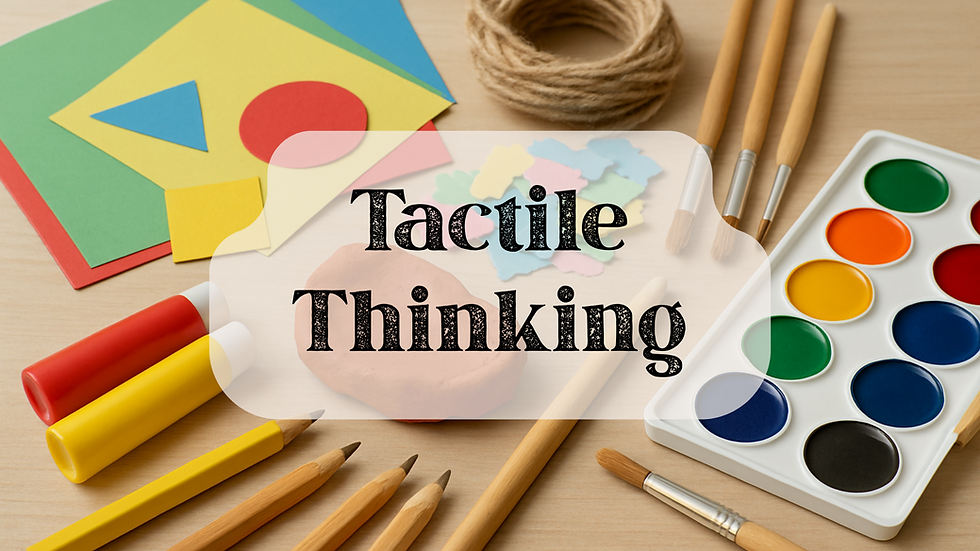Why Creativity Isn’t Just for Artists
- Brandy Prettyman
- Jul 21
- 2 min read

When we think of creativity, our minds often jump to painters, writers, or designers. But the truth is, creativity is a core competency in every workplace—from startups to boardrooms. And one of the most underestimated ways to cultivate it? Arts and crafts.
You don’t need to be “artistic” to benefit from creative activities. In fact, engaging in hands-on crafting can rewire the brain, shift perspectives, and spark the kind of innovative thinking businesses rely on to grow and adapt.
Creativity Is a Muscle, and It Needs Cross-Training
Just like physical fitness, creativity thrives on variety. Encouraging employees to step away from the screen and into a hands-on, tactile experience activates different areas of the brain. The simple act of manipulating materials—threading beads, molding clay, painting with watercolors—invites the mind to wander, problem-solve, and imagine without pressure.
These micro-moments of creative exploration foster:
Improved pattern recognition (key for strategic thinking)
Enhanced cognitive flexibility (great for pivoting in uncertain times)
Better memory recall and ideation (hello, brainstorming!)
Making Something With Your Hands Helps You Think Differently
Have you ever noticed how a shower or a walk can lead to your best ideas? Crafting works the same way. It occupies the body just enough to free the mind. This state, often called “flow,” lets the brain make new connections, often solving problems in unexpected ways.
For teams working in innovation-heavy fields, even 30 minutes of collaborative crafting can produce surprising dividends:
Teams develop more empathy and openness
Leaders observe emerging strengths in quieter team members
New ideas surface from unlikely sources
Creativity Is Contagious in the Best Way
When you introduce creative exercises like crafting into your workplace, you’re doing more than boosting morale. You’re giving permission for everyone to think differently.
In a culture where perfectionism and productivity often dominate, offering a low-stakes, no-right-answer environment is powerful. It shows that curiosity is welcome, exploration is valued, and play is productive.
And here’s the bonus: employees often return to their desks refreshed, re-energized, and more collaborative than before.
Start Small. Think Big.
Not sure where to begin? Here are three easy ways to bring arts and crafts into your workplace:
Creativity Breaks: Offer 20-minute crafting sessions during lunch or staff meetings. Think air-dry clay, collage, or coloring.
Team Craft Challenges: Host monthly themed creative contests. Build a tiny office out of recycled materials, decorate plant pots for desks, and more.
Creative Thinking Workshops: Combine brainstorming with hands-on making to solve business challenges in new ways.
Remember, it’s not about crafting perfection. It’s about creating a space for people to engage with ideas differently.
Final Thought
Creativity isn’t a job title. It’s a mindset. And when you nurture it with purpose, especially through unexpected tools like arts and crafts, your workplace becomes more resilient, more dynamic, and more human.
So go ahead—bring out the markers. Innovation might be one paint stroke away.
Hey there! Just so you know, we're part of the Amazon Services LLC Associates Program. This means we can earn fees by linking to Amazon.com and affiliated sites. Cool, right?




Comments